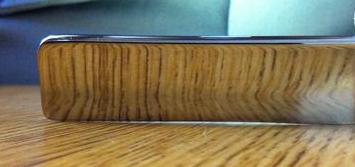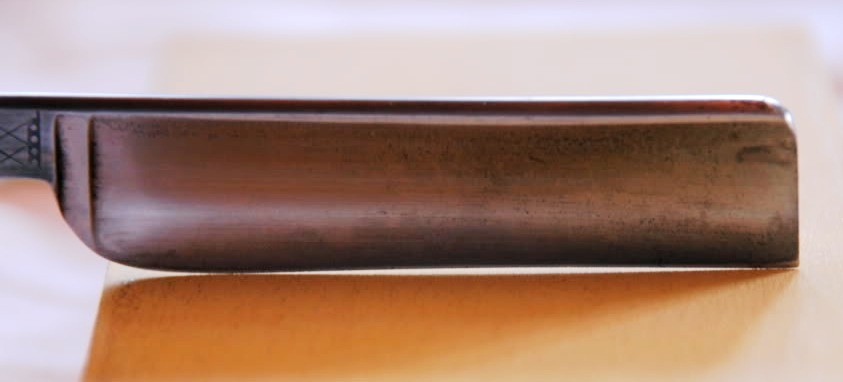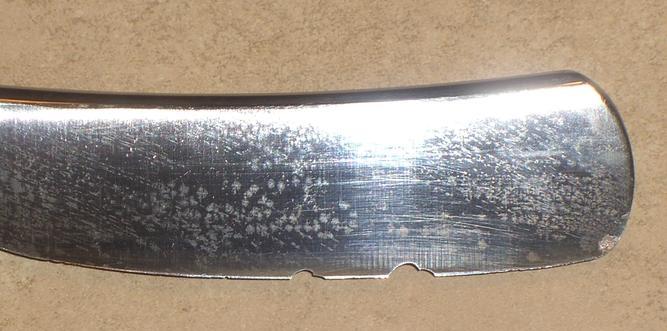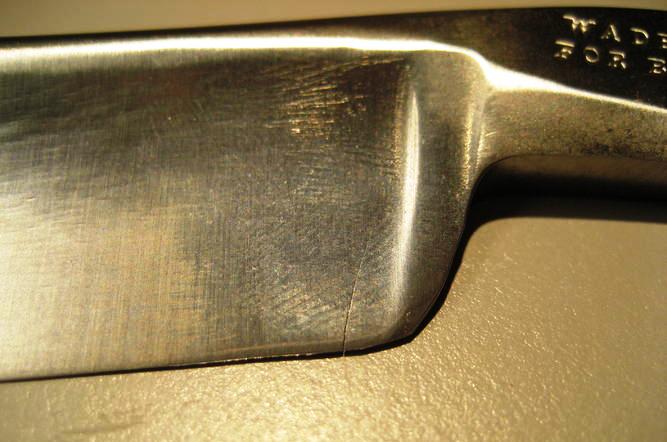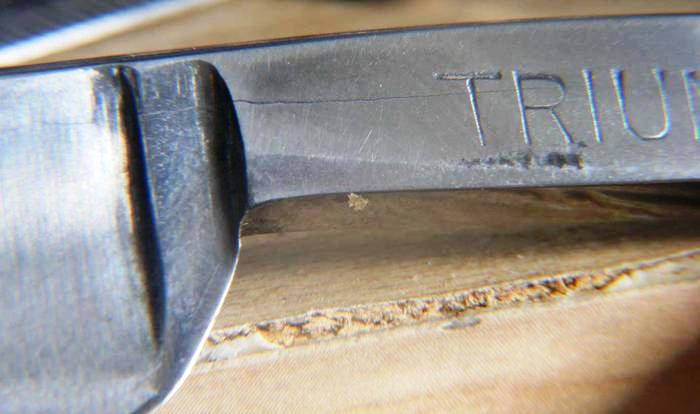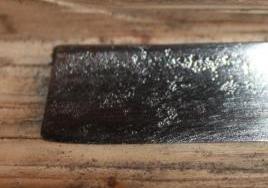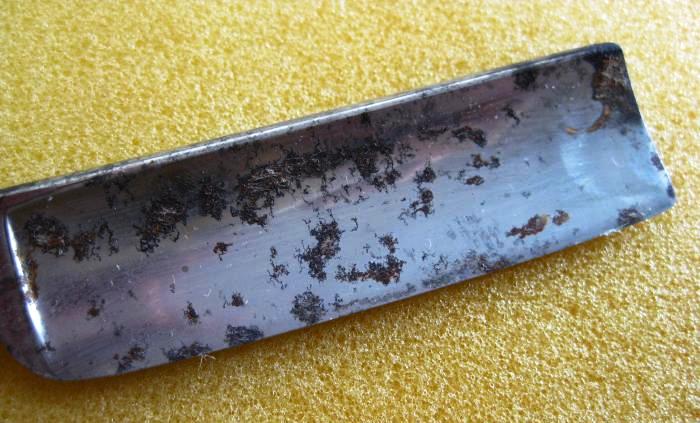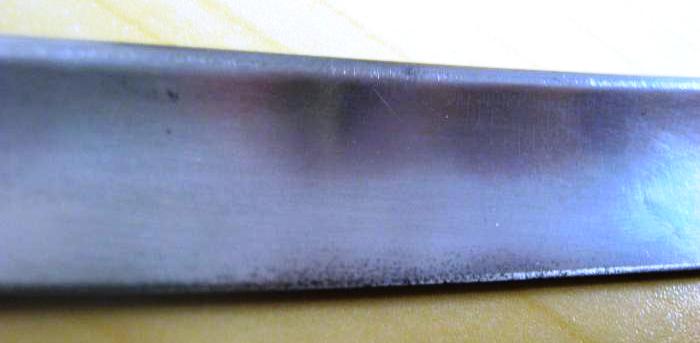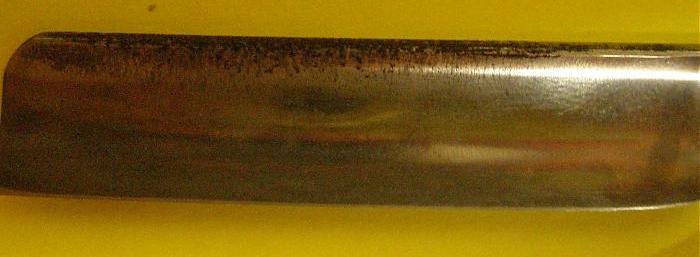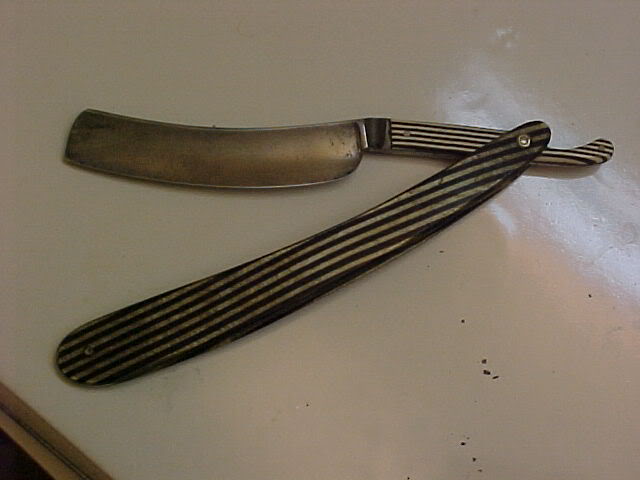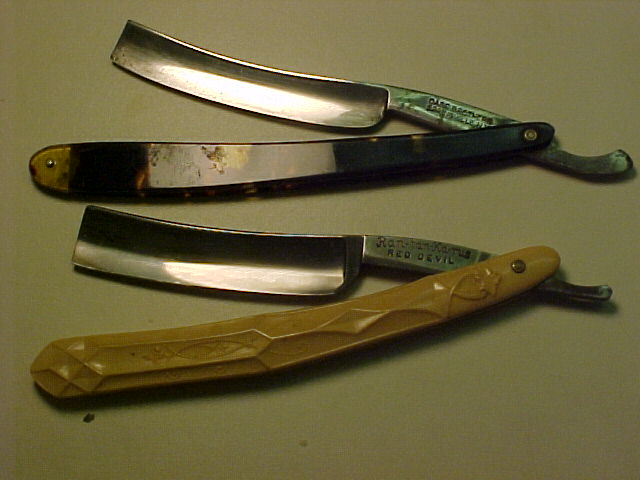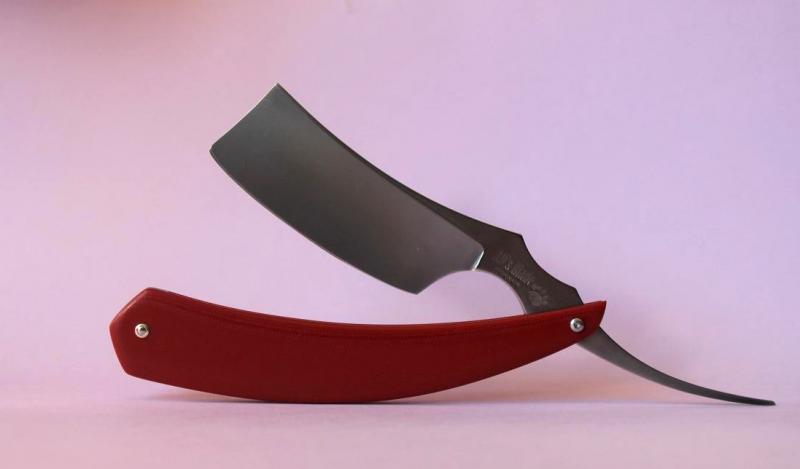Purchasing straight razors
Contents
Introduction
Questions are often asked with regard to purchasing straight razors. Members of Straight Razor Place have provided answers to some of the most frequently asked questions. Enjoy the read, and many thanks to the members who have contributed to this page.
Choosing a razor.
Choosing a razor is a matter of personal preference. If you must have a brand new razor the quality choices are limited to the three main major current manufacturers: Dovo, Thiers-Issard, and Böker; as well as the custom razor makers. There are also the Chinese-made Gold Dollar and the razors currently made by Giesen & Forsthoff, which are of a somewhat lower quality, but usually can be made to shave. A brand new razor will still have to be honed. Fortunately there are many vintage razors which often are of equal or even better quality than current production razors and they will generally cost significantly less. The best place to find one is the Classifieds section of SRP. Most often the razors there are honed and shave-tested by the seller, and this is noted in the ad, but when in doubt you can always ask. Newbies are strongly discouraged from purchasing vintage razors on eBay because they do not have the experience to evaluate the condition of the razor - in most cases the pictures on eBay do not provide enough details, and even when they do, a newbie generally doesn't know what is important and what isn't. Nevertheless there are some razors that should be avoided, and even though every purchase is a risk there are a few popular vintage brands that are generally good. You can find detailed descriptions of hundreds of new and vintage razors in our Straight Razor Database (SRDB).
Shopping for that first razor.
Resist the urge to buy a fancy model. Experience has shown that almost any beginner will dull their razor while stropping, damage the edge when hitting a tap, or simply drop the razor.
- Resist the urge to buy from an auction site. For starters, you will not be able to tell whether a razor is the condition described by the seller. Defects can be slight but fatal. Even if the razor is in excellent condition, chances are you will pay considerably more than the current going rate. Good razors on eBay are rare, and the experienced users will spot, and snipe, them very quickly.
- Stick to what is recommended in the FAQ. A larger, heavier, stiffer razor will be easier for you to use in the beginning. You will find watching your maneuvers easier, and it will also be easier to keep the razor flat while stropping.
- Whether you buy new or from the Classifieds, buy for function, not looks. A beaten up vintage, honed by a professional, will likely out-shave a new production razor in any event.
- Two razors are better than one. Get both into shave ready condition, and keep one for comparison purposes. If unsure whether your shaving razor is actually shave ready, consult the edge of the spare one.
- When buying from a reputable source, learn to live with the fact that the razor is shave ready despite your personal disagreement with that verdict. It is tempting to blame initial frustrating experiences on the blade, but in most cases, those frustrations are caused either by lack of technique or inadequate preparation.
- When buying from the Classifieds, make sure you understand the significance of the ad, some crucial points:Can I trust the seller?
- While the Classifieds offer a higher success rate for inexperienced buyers than antique markets or online auction stores, it is eventually up to you and the seller whether you will consider the purchase a success.
- Make sure you buy from an experienced member, preferably one who is also known to be good at honing. The interpretations of "shave readiness" vary, and unless the seller has honed, and used, a good number of razors, his verdict may be very different from yours.
- The devil is in the details. As a beginner, you will not be able to adequately assess whether "some hone wear" is not much of a problem, or a death warrant for a razor. "Blemishes" may be easy to fix for an experienced shaver, but may equally easily ruin your shaving experience right from the start.
- Sterilizing a razor is always a good idea, as long as you understand the risks to the razor associated therewith.
Buy mineral oil, and use it. At least once a week, some beginner comes in here drowned in tears because his razor has developed rust spots. Even stainless steel will stain; it just takes an hour more.
Buying a straight razor on a budget
For the beginner that would like to start using straight razors but is on a tight budget, it can sometimes be difficult to know where to find shaving supplies that are lower in cost without the fear of getting near-worthless quality. We do believe you still "Get what you pay for", yet there are products out there with high enough quality to get a beginner started without breaking the bank or wasting money. This page is intended as a map to locate acceptable quality items with a reasonable price tag.
A common beginners' question is: "I would like to start shaving with a straight razor, but I'm on a budget. Where can I get a good razor that will not cost too much?" Unfortunately, the only correct answer to this is "it depends."
Asking someone to tell you what razor is best for you is as useful as calling a random stranger and asking them what you should wear tomorrow. There are just too many unknown variables to give a complete answer. The razor is the one piece of equipment that you will just have to do a little research in order to determine which one suits you best. Learning to shave with a straight razor requires patience; if you do not have the patience to research a little before purchasing the extremely sharp blade that you will be holding near that pretty face and neck of yours, then this method of shaving may not be for you.
Start with the Beginner's Guide located at this very wiki you are currently reading. You should also visit the SRP Forums. The members are very helpful and will help you narrow down your choices once you have a few in mind. However, if you ask a question similar to my sample questions above, prepare to get an answer similar to what you just read.
The SRP Classifieds is also a good place to find good deals from Straight Razor enthusiasts. Most of the sellers on this site are very reputable within the community
Buying razors.
When purchasing razors, especially used ones, common problems are abundant. When evaluating a particular razor, be on the look for the following;
Frowning blades
When a blade is wider at the heel and the toe, it is said to be "frowning." A frowning blade is very difficult to hone if it can be honed at all and so should be avoided if possible.
Examples of razors with a frown:
Edge damage
Chips, nicks, or cracks in the edge can also prevent a blade from being honed. Very small chips or nicks can take many hours to hone out. Larger chips and nicks as well as cracks can mean that a razor needs to be reground before it is usable.
Examples of chips, nicks, and cracks:
Note how the cracks are often hard to detect, especially if you are seeing the razor on an internet ad.
In the below photograph, you have what appears to be a crack running through the tang.
Here is an explanation of what you are actually looking at;
It shows a "cold-shut" which is not the same thing as a crack. It looks a little like a crack but is mainly cosmetic and it is formed by a "crease or wrinkle" in the hot steel. During forging, the edges of the crease drop below forging temperature, so they do not weld. This leaves the crease looking like a crack.
You mainly find them in improbable places; like running horizontally along the spine and sometimes crossing it after running parallel for a bit. In this photograph the "cold-shut" is running horizontally along the tang.
The cold-shut does not render the razor useless, as a crack would. A razor with a cold-shut in the thicker bits of steel, can be used just as well as one without a cold-shut.
Heavy pitting Heavy pitting that covers a large portion of the blade will require sanding a lot of material off of the blade in order to get rid of the pitting and corrosion. If the pitting or the corrosion extend to the edge of the blade, it is likely that the blade cannot be made usable again and therefore should be avoided.
Examples of heavy pitting:
Heavy pitting can develop below the rust.
Micro pitting, or Devil's Spit, is very fine corrosion that can tunnel into the steel and cause damage beyond what you can see. Viewed with a good 10x hand lens it looks like random, black lines and pores. If it occurs along the edge, the blade may not be recoverable for shaving.
Pitting that runs down to the edge, can often make honing a shave ready edge impossible.
Spine damage due to pitting.
Extreme warping; A blade that twists or is otherwise warped visibly is likely to be difficult or impossible to hone. Many older blades may be uneven when placed on a flat hone and can only be honed by using specific advanced techniques like a rolling hone stroke or a concentrated x-pattern. Extreme warping is observable with the naked eye and should be avoided.
Warped scales, however, can be fixed, cf. the Illustrated Guide to Fixing Warped Scales. It should be noted, though, that removing the scales may result in breakage. A relatively safe way to remove and later re-attach scales is described in the Illustrated Guide to Un-pinning and Re-pinning.
Smiling Razors;
Smiling razors are not damaged razors; here are some beautiful examples of what is referred to as a "Smiling Razor". Note the up-turned blade, referred to as a smile. Many smiling blades are actually made that way and are sought after by collectors/shavers. Just keep in mind, if one of these beauty's catch your eye, honing them to shave ready can be a challenge.
Questions to ask a seller
Despite their best efforts, many sellers have limited knowledge of what is essential information to be put into a classified. If any of the following are missing from the description of a razor that is for sale, you may want to enquire further to avoid later disputes over lack of quality. 1. When was the blade last honed? 2. Is there evidence of micro pitting? 3. Does it center in the scales without the edge making contact on either side? 4. Is the pivot pin tight? 5. Are the scales original? 6. Are there any cracks in the scales? 7. Are there any hairline cracks in the blade? 8. Do you have pictures of the (other side of the blade, close up of a certain area, etc)? 9. Do you offer a return policy if I am not satisfied? 10. If yes, what are the terms?
Good straight razor brands and razor brands to avoid.
Please refer to our lists of Good Straight Razor Brands and Brands of Straight Razors to Avoid.
The shave ready razor.
For the new guys out there, there seems to be a lot of confusion on what shave ready means to dealers, and what a truly shave ready razor means to an experienced shaver. Shave ready according to a dealer (generally concerning new razors) are razors that have been mechanically sharpened (generally on a waterstone type wheel) and then hand honed on a stone of some sort, Thiers-Issard for instance uses Belgian waterstones.
If it is brand new and says "shave ready" why isn’t it really shave ready?
The reason for this is most likely the cost of the man hours required to make a razor truly shave ready for our purposes, my guess is the cost of workmanship would drive the razor prices up and prevent a company from being as competitive in the marketplace with another company that does not spend this time and energy on finishing, and yet can still call their razors shave ready. These razors are sharp of course, and you could shave with them, so don’t think that you are getting ripped off or lied too.
The difference between a factory shave ready razor and a razor that has been honed by an expert such as Lynn Abrams, Joe Chandler, etc, is the experience level, time, and techniques, as well as equipment. The fact that all of their honing is done by hand with no machine grinding makes a VERY large difference in the final edge, and of course the closer detail to the edge that can be observed while hand honing. The shave from such razor will be in general a much more comfortable, close, and smooth than from a factory sharpened one. This means little or no pulling of your facial hair, and less razor burn. Also, a proper honing provides a benchmark for the time when you yourself start honing.
Where to get a truly shave ready Razor?
If you buy a razor from a reputable vendor such as Classic Shaving, Vintage Blades LLC, or Straight Razor Designs, they offer honing services. This makes it convenient to get a brand new shave ready razor that will make your learning curve easier. We also highly recommend the option of buying a used and/or refurbished razor that has also been hand honed and is truly shave ready. This will allow the new shaver to get a quality straight razor that is really ready to shave with. This option generally costs significantly less than a factory new razor which is not really shave ready according to our high standards. You can find such razors in the Classifieds section on SRP.
Why do certain razors require more or less honing than others?
There are a number of reasons this why some razors require more honing than others:
1. The material that your razor is made from will determine how much hand honing is required and how long your edge will remain sharp. Stainless steel usually takes a little more work to achieve the same sharpness as carbon steel, but will also stay sharper a little longer.
2. The thermal treatment that the razor undergoes during manufacturing will affect its hardness which in turn will affect how it takes and holds an edge.
3. Also, if a razor has more of a wedge shape (less hollowing) it will generally require more honing to achieve the same sharpness as a razor that has been partially or fully hollowed. This is due to the amount of metal that must be removed to achieve that perfect edge.
4. If a razor has a dull edge then it will take a LOT of work just to set a bevel and get the razor to a level of knife sharpness. Razors with chips in the edge and/or corroded steel could take a lot of work before you even reach the good steel that will take a quality edge
The ability of a razor to take and keep good edge is the result of the type of metal used to make the blade and the process used in manufacture. Simple steels with few alloying elements rely solely on the formation of iron carbides for their hardness. Steels with more alloying elements require a more complicated hardening process at different heats for different amounts of time.
The temperatures at which the blade is tempered range from 430 - 600 degrees Fahrenheit. Tempering is a softening process which also makes the metal tougher. Hardened steel that is not tempered is very brittle and not tough at all. Tempering can be done in a toaster oven, a low temperature kiln, or in a forge - be it gas or coal. Tempering can also be done in a lead bath as the temperature of molten lead is 600 degrees Fahrenheit. The end result of all this is a blade that can take an edge and stay sharp due to a variety of factors.
So, in the end it is down to the quality and care taken with the manufacture of the blade.
So what’s the big deal?
The bottom line is, at least for your first razor whether new or used, make sure it is truly shave ready by having it hand honed by an expert. This can make or break your shaving experience and will show you what sharp truly means. We have seen many new users give up on straight razor shaving because they tried to start with a razor that was not really shave ready resulting in painful and inadequate shaves.
